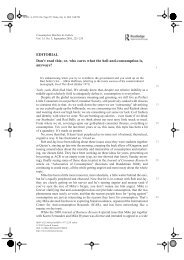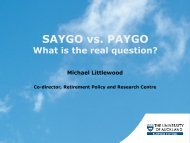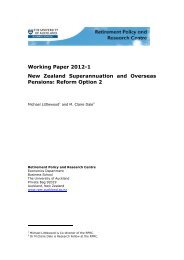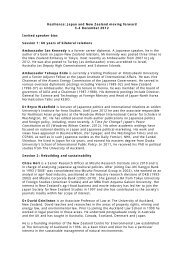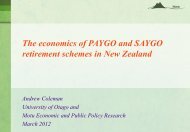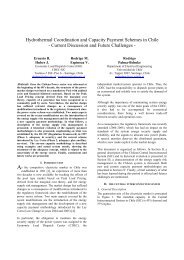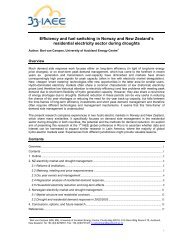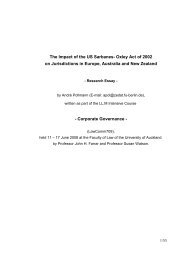TAX NONCOMPLIANCE AMONG SMALL and MEDIUM ...
TAX NONCOMPLIANCE AMONG SMALL and MEDIUM ...
TAX NONCOMPLIANCE AMONG SMALL and MEDIUM ...
You also want an ePaper? Increase the reach of your titles
YUMPU automatically turns print PDFs into web optimized ePapers that Google loves.
which has a deficiency rate of 100% as a result of having zero reported income but some amount<br />
of unreported income.<br />
4.3 Empirical Model <strong>and</strong> Variable Definitions<br />
The empirical analysis in this study uses the following multiple regression model. The corporate<br />
tax noncompliance model is as follows:<br />
Log (CTNC) = β₀+ β₁ PEN + β₂ MTR + β₃ LIQ + β₄ FORE+ β₅ Log ASSETS + β₆ MAN + β₇<br />
CON + β₈ WSALE + β₉ SER + ệ<br />
CTNC is corporate tax noncompliance; measured as the natural logarithm of the ratio of<br />
unreported income over actual income, β₀ is the intercept or constant; β₁ PEN is the dummy of<br />
penalty rate, measured as 1; if the penalty rate is between 10%-45% <strong>and</strong> 0; if it is above 45%; β₂<br />
MTR is the marginal tax rate, measured by the marginal tax rates according to the basis year; β₃<br />
LIQ is the financial liquidity, measured by working capital (current asset minus current liabilities)<br />
divided by total assets; β₄ FORE is the foreign ownership in the company, measured as 1; if the<br />
company has foreign equity <strong>and</strong> 0; if it is wholly domestic-owned; β₅ Log ASSETS is the<br />
company size, measured as a natural logarithm of the total assets; β₆ MAN is the dummy for<br />
manufacturing industry; β₇ CON is the dummy for construction industry; β₈ WSALE is the<br />
dummy for wholesale <strong>and</strong> trade industry <strong>and</strong> β₉ SER is the dummy for service industry.<br />
4. THE FINDINGS<br />
4.1 Profiles of SMEs<br />
The SMEs’ profiles are presented in Tables 2 <strong>and</strong> 3. The results as shown in Table 2 reported<br />
that there are 282 SMEs which engaged in corporate tax noncompliance. There are five major<br />
industries which are construction, services, wholesale <strong>and</strong> retail trade, manufacturing <strong>and</strong> real<br />
estate. As displayed in Table 2, for the purpose of further analysis, utilities, transport, storage <strong>and</strong><br />
communication, financial intermediation, hotels <strong>and</strong> restaurants, education <strong>and</strong> other services<br />
have been categorized into the service industry. The most predominant industries engaged in tax<br />
noncompliance are the construction industry (30.8%), services industry (26.6%) wholesale <strong>and</strong><br />
trade industry (19.5%), followed by manufacturing (15.3%) <strong>and</strong> real estate industry (7.8%). In<br />
essence, upon checking, this study found a total of RM39, 413,789.19 additional taxes <strong>and</strong><br />
penalty were collected from these five major industries. Notably, RM13, 611,305.90 additional<br />
taxes <strong>and</strong> the penalty were collected from the construction industry. These figures reflect the<br />
magnitude of tax noncompliance among SMEs in Malaysia.<br />
14



